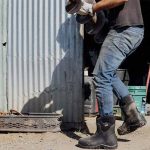Puma's Americas segment returned to double-digit gains on a currency-neutral basis in Q2 for the first time since the first quarter 2009. Sales in the Americas grew 26.1% to €212.6 million ($272 mm) and increased 15.4% on a currency-neutral basis. Both sub regions – North America and Latin America – sustained their positive performances from the first quarter.
The Americas growth followed a 9.8% gain on a currency-neutral basis in the region in Q1, a 2.6% decline in Q4 2009, a 1.6% gain in Q3, 6.9% increase in Q2 2009 before the last double-digit gain of 11.5% seen in Q109.
Unfortunately, Puma's revenues in other regions remain stubbornly soft despite the fanfare around the World Cup.
Sales in the EMEA region (Europe, Middle East and Africa) slid 7.2% to €267.6 million ($344 mm) and were down 10.7% on a currency-neutral basis. Asia Pacific region sales were down 5.7% to €135.2 million ($173 mm) and declined 17% on a currency-neutral basis.
Overall consolidated sales grew 2.5%, but decreased 4.8% on a currency-neutral basis, partly reflecting tough comparisons against closeout sales last year. Deliveries in June were also impacted by late product deliveries and there were no pre-shipments, unlike last year.
Puma's second quarter profit rose 16.4%, thanks largely to a lower tax rate. EBIT nudged up 1.6% to €64.1 million ($82 mm). As a percentage of sales, the EBIT ratio dropped slightly to 10.4% from 10.5%. Adjusted by costs stemming from its integration of Cobra Golf (acquired in July), the EBIT margin would have improved over last year.
“PUMA performed according to plan in the second quarter and we are gearing up for solid growth in the second half of the year based on a strong outlook,” said Jochen Zeitz, CEO. “Given an overall improvement of the global economies as well as our decisive measures taken in the past 18 months to adjust our organization and processes to the new market realities, we feel ready to re-engage with our long-term expansion plan as of next year.”
On a currency-neutral basis, Footwear sales slid 9.7% to €321.2 million ($410 mm). Apparel sales fell 5.3% to €208.6 million ($266 mm). Due to first-time consolidations, Accessories sales improved 20.6% to €85.6 million ($109 mm). On an reported basis, sales were down 2.7% in Footwear, up 2.3% in Apparel and climbed 28.9% in Accessories.
Gross margin improved by 30 basis points to 50.3% of sales as fewer closeout sales more than offset negative impacts from currency hedging, the regional mix and higher raw material costs. Footwear's margins were up 90 basis points to 50.6% of sales versus 49.7% in Q2 last year, and Apparel improved 40 basis points to 52.7%. Accessories GM declined to 50.7% of sales from 54.9% in Q2 last year, mainly due to the inclusion of Cobra Golf.
Operating expenses increased 3.4% due to the inclusion of Cobra Golf as well as currency effects.
Net inventory increased 5.7% to €456.8 million ($587 mm) but decreased 5.7% on a currency-adjusted basis.
Given a strong outlook in sales for the second half, Puma said it continues to expect sales growth in the low- to mid-single digits for the full year 2010. Gross profit margins should remain unchanged to last year's level. EBIT before special items is expected to improve compared to last year. But management scrapped its full-year pre-tax profit forecast, citing potential costs associated with litigation in Spain around licensing rights for the Puma brand in the region. On a conference call with analysts, Zeitz said “it would not be prudent” to maintain the pretax profit target in light of possible costs related to legal action against former Spanish license holder Estudio 2000. According to an arbitration ruling, the vesting of the trademark rights is subject to a one-time payment of up to €98 million to Estudio 2000. Puma is challenging the ruling.
Zeitz said Puma still plans to reach its €4 billion sales target by 2015, partly achieved through acquisitions.
Puma's sales reached €2.6 billion in 2009.
“PUMA's initial Phase IV expansion plan was slowed down by the global economic crisis that curbed PUMA's sales progress,” Puma said in a statement. “With an improved outlook of the global economy, which should lead to a reasonable market recovery, PUMA's management is revisiting its long term development plan, leading to a refined strategy, aligned with today's market realities, to unfold PUMA's long-term potential.”















